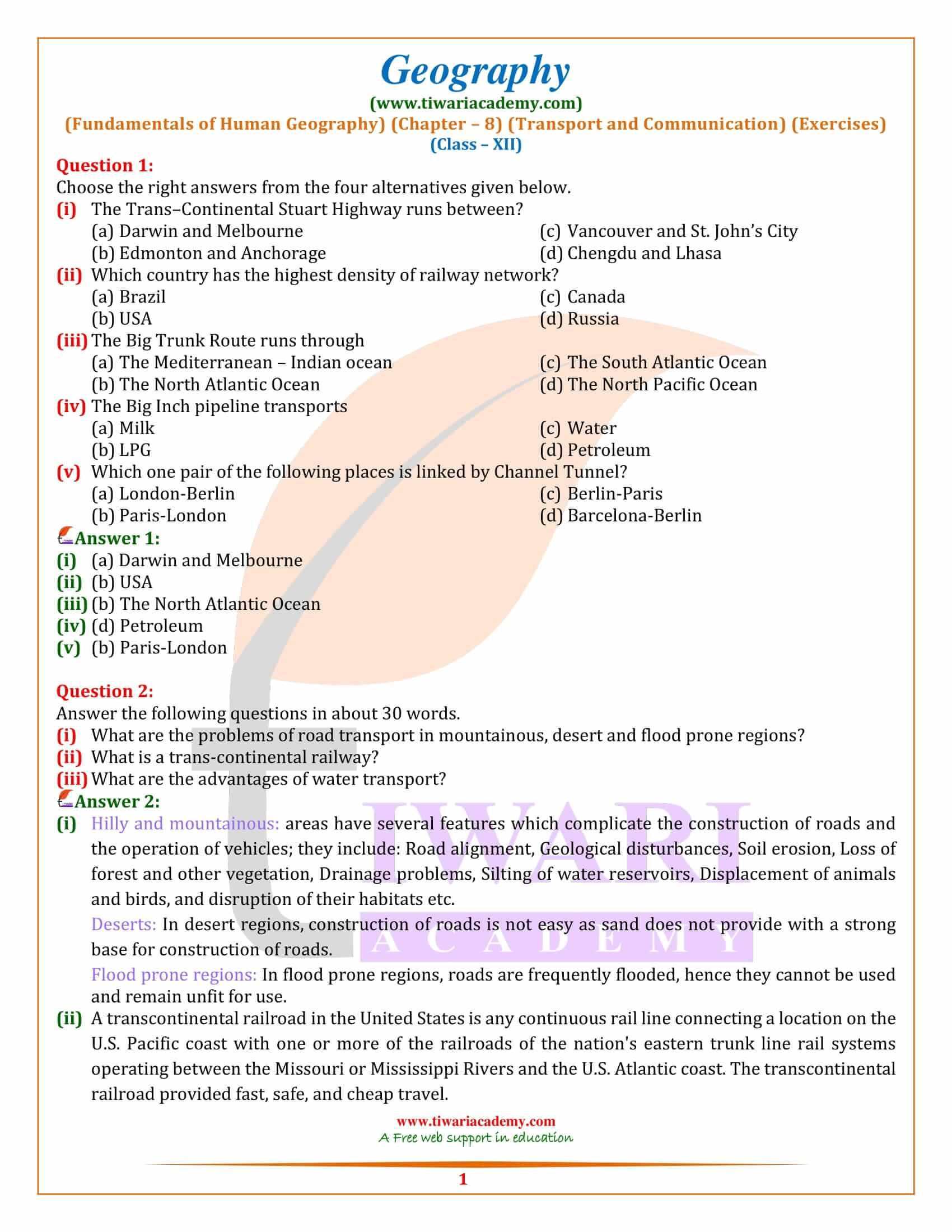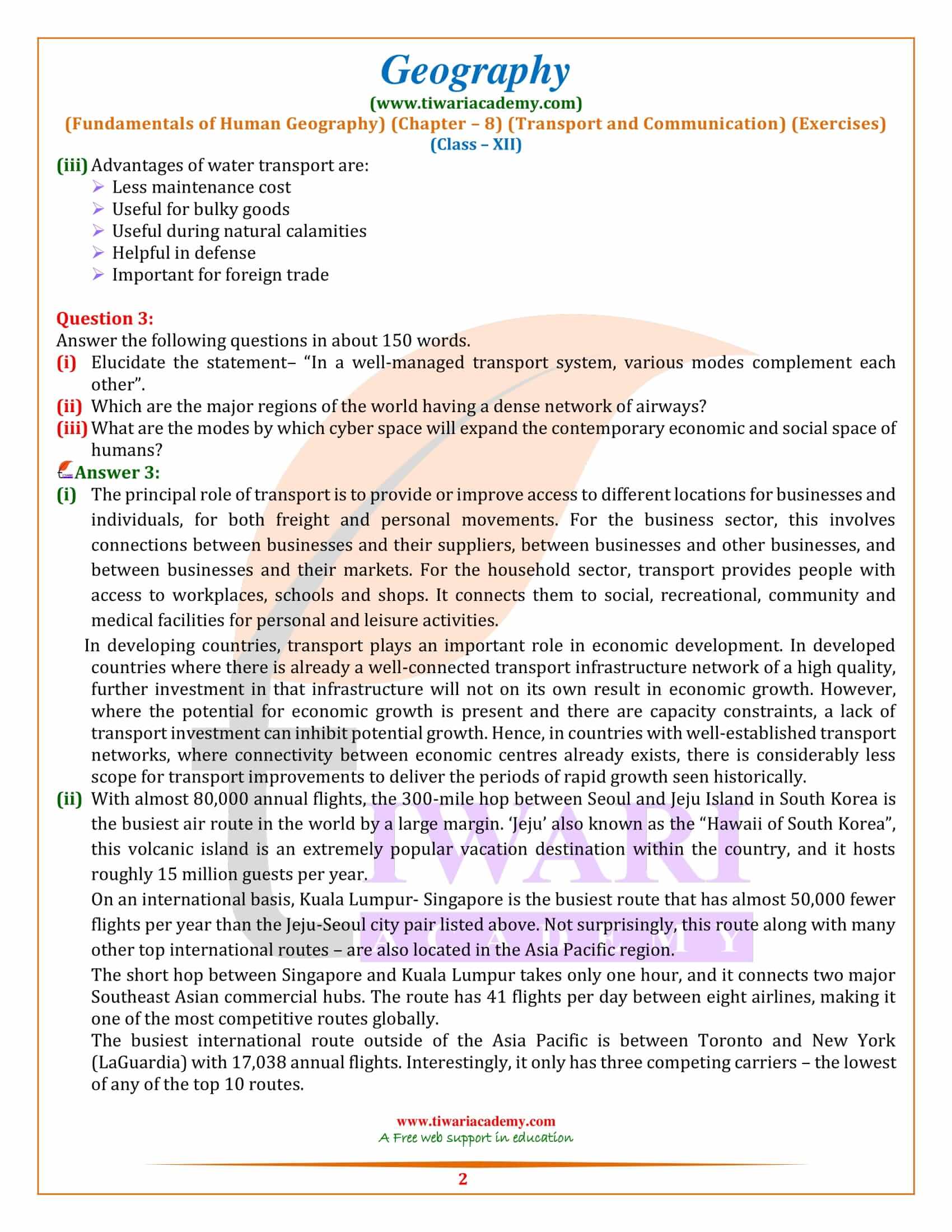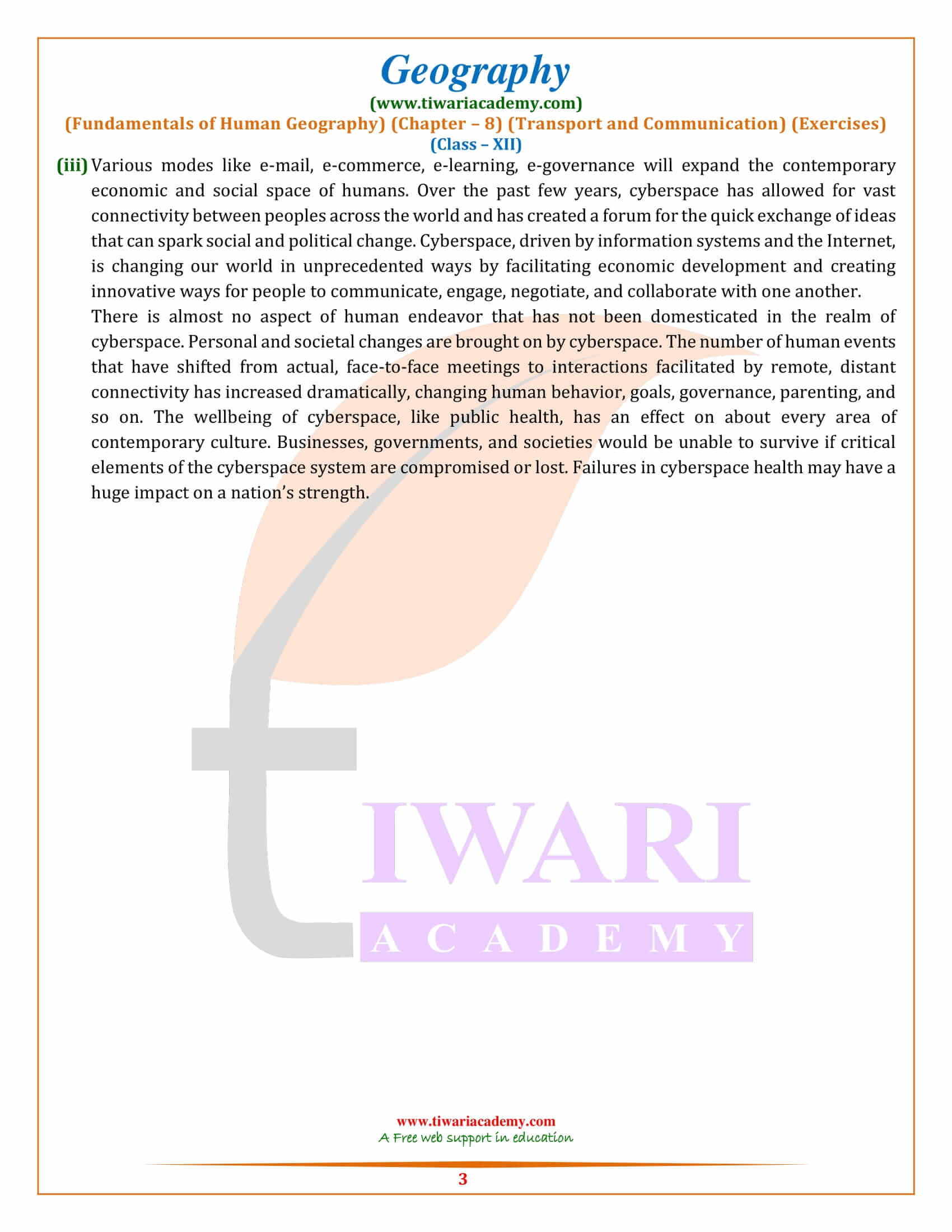NCERT Solutions for Class 12 Geography Chapter 8 Transport and Communication in Hindi and English Medium updated for new session 2024-25. Class 12 Geography unit 3 chapter 8 of Fundamentals of Human Geography exercises question answers, MCQ and important questions are given for board preparation.
NCERT Solutions for Class 12 Geography Chapter 8
Class 12 Geography Chapter 8 Transport and Communication Question Answers
What are the problems of road transport in mountainous, desert and flood prone regions?
Hilly and mountainous: areas have several features which complicate the construction of roads and the operation of vehicles; they include: Road alignment, Geological disturbances, Soil erosion, Loss of forest and other vegetation, Drainage problems, Silting of water reservoirs, Displacement of animals and birds, and disruption of their habitats etc.
Deserts: In desert regions, construction of roads is not easy as sand does not provide with a strong base for construction of roads.
Flood prone regions: In flood prone regions, roads are frequently flooded, hence they cannot be used and remain unfit for use.
Class 12 Geography Chapter 8 MCQ
The Trans–Continental Stuart Highway runs between?
Which country has the highest density of railway network?
The Big Trunk Route runs through
Which one pair of the following places is linked by Channel Tunnel?
What is a trans-continental railway?
A transcontinental railroad in the United States is any continuous rail line connecting a location on the U.S. Pacific coast with one or more of the railroads of the nation’s eastern trunk line rail systems operating between the Missouri or Mississippi Rivers and the U.S. Atlantic coast. The transcontinental railroad provided fast, safe, and cheap travel.
What are the advantages of water transport?
Advantages of water transport are:
- Less maintenance cost
- Useful for bulky goods
- Useful during natural calamities
- Helpful in defense
- Important for foreign trade.
Which are the major regions of the world having a dense network of airways?
With almost 80,000 annual flights, the 300-mile hop between Seoul and Jeju Island in South Korea is the busiest air route in the world by a large margin. ‘Jeju’ also known as the “Hawaii of South Korea”, this volcanic island is an extremely popular vacation destination within the country, and it hosts roughly 15 million guests per year.
On an international basis, Kuala Lumpur- Singapore is the busiest route that has almost 50,000 fewer flights per year than the Jeju-Seoul city pair listed above. Not surprisingly, this route along with many other top international routes – are also located in the Asia Pacific region.
The short hop between Singapore and Kuala Lumpur takes only one hour, and it connects two major Southeast Asian commercial hubs. The route has 41 flights per day between eight airlines, making it one of the most competitive routes globally.
The busiest international route outside of the Asia Pacific is between Toronto and New York (LaGuardia) with 17,038 annual flights. Interestingly, it only has three competing carriers – the lowest of any of the top 10 routes.





